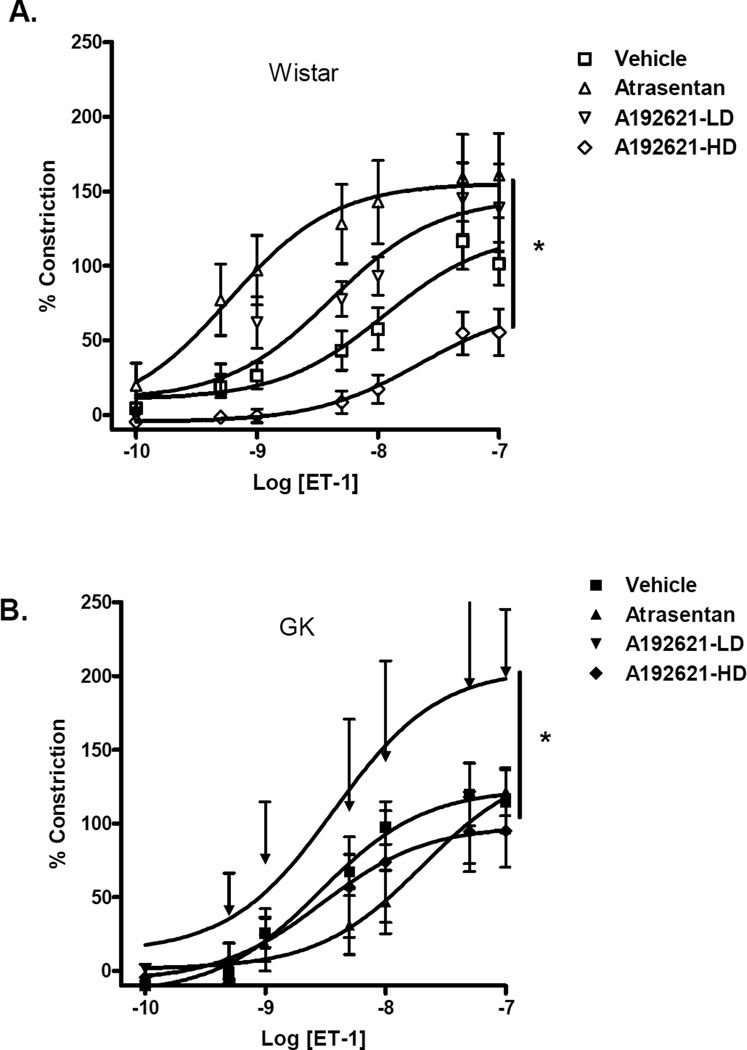FIG. 2.
Effects of chronic ET receptor antagonism on ET-1-mediated contractility in control Wistar (A) and diabetic GK (B) rats. While ETA receptor antagonism improved sensitivity to ET-1 in control animals (n=10), it decreased ET-1 sensitivity in GKs (n=6) as demonstrated by a rightward shift of the dose response curve. ETB blockade with 30 mg/kg A-192621 caused a rightward shift of the dose response almost identical to that caused by Atrasentan. A-192621 15 and 30 mg/kg/day groups are shown as LD (n=3 for both control and GK) and HD (n=5–6 in control and GK), respectively. Results are shown as mean ± SEM, *p<0.001 repeated measures of ANOVA. Significant posthoc comparisons (P<0.05) for control Wistar groups are vehicle vs atrasentan, vehicle vs HD, atrasentan vs LD, atrasentan vs HD, and LD vs HD. For GK groups, vehicle vs atrasentan, vehicle vs LD, atrasentan vs LD, LD vs HD were significantly different.

